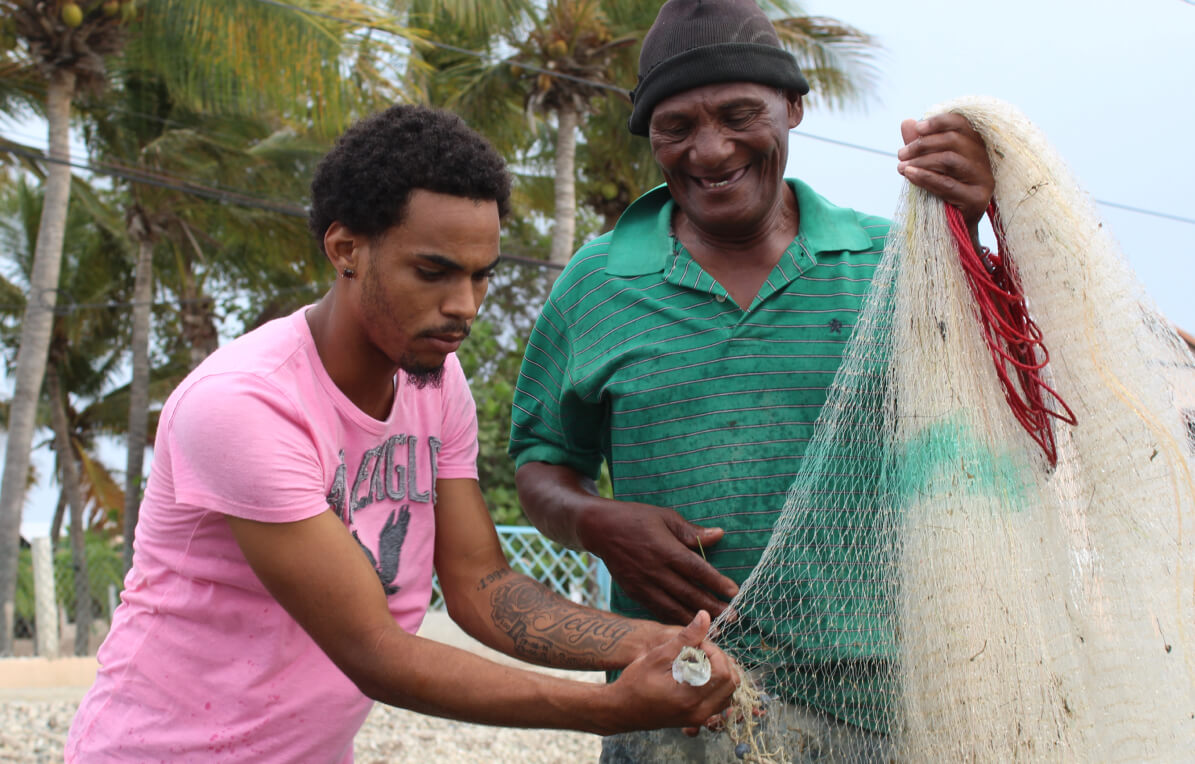Counterpart’s Rights and Dignity project launched an art contest titled “Drawing For Our Rights” with our local partners ConTextos and Partners El Salvador in observance of International Youth Month. The objective was to promote artistic creation for social change and human rights among Salvadoran youth through graphic pieces that raised awareness of social issues such as migration, discrimination against the LGBTQI+ population, forced disappearances, among others.
We held an exhibition of all the artworks and an awards ceremony on August 31. In addition, the youth participants listened to a talk on artistic expression and human rights to encourage them to continue using their talents to build a more just and tolerant society.
The three most outstanding entries in the categories of digital drawing, illustration and comic strip received special recognition and will be exhibited for the next two months in public places such as the Plaza Merliot shopping mall. View all 21 art submissions below.
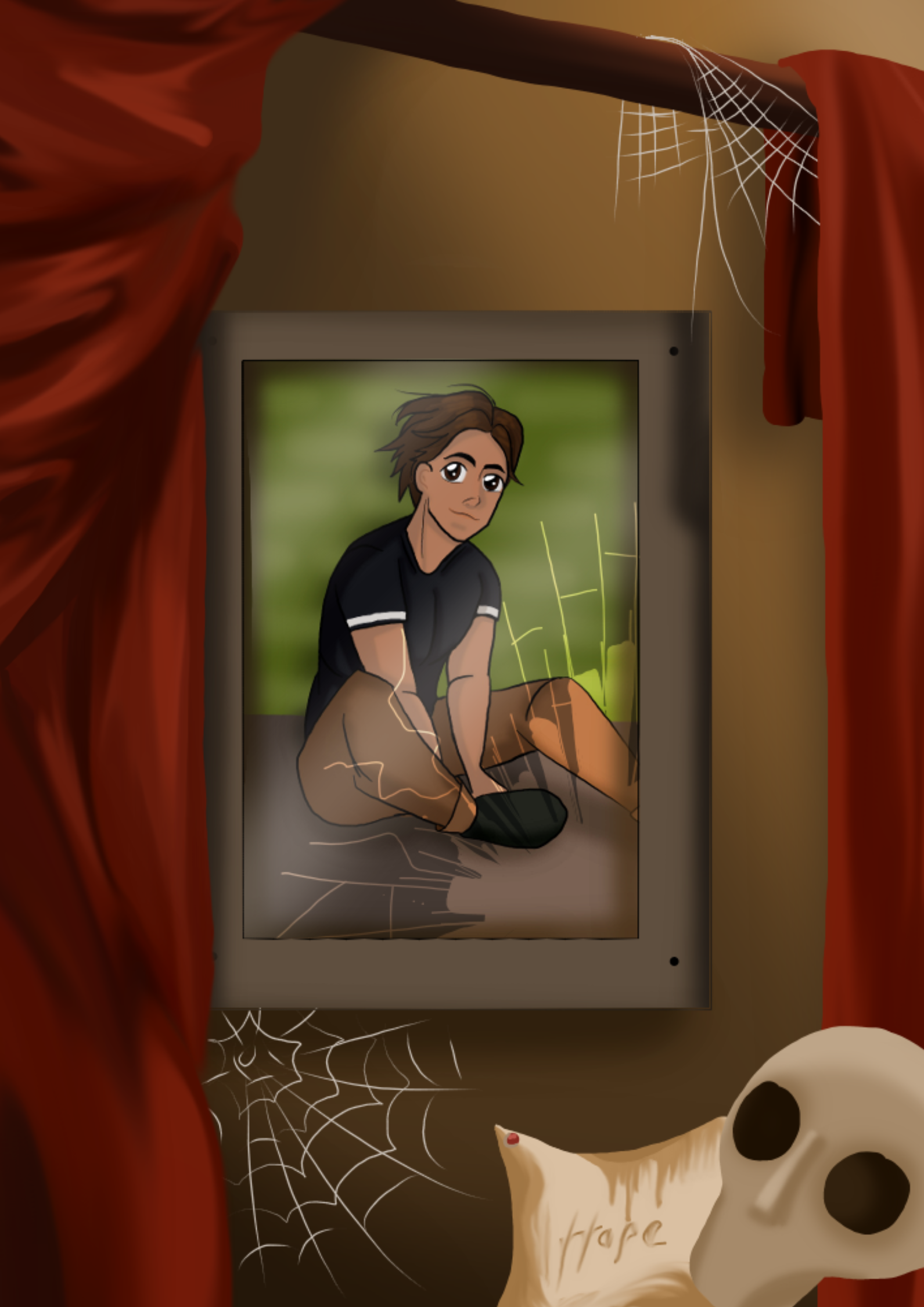
Alive by Carlos José Rodríguez Cuéllar
Description: “With this artwork, I aim to empathize with every parent’s worst nightmare. It’s for those who one day saw their children leave home but never return, for those who had to come to terms with that loss, for those who keep fighting, and for those who left and never got to see their child alive again.”
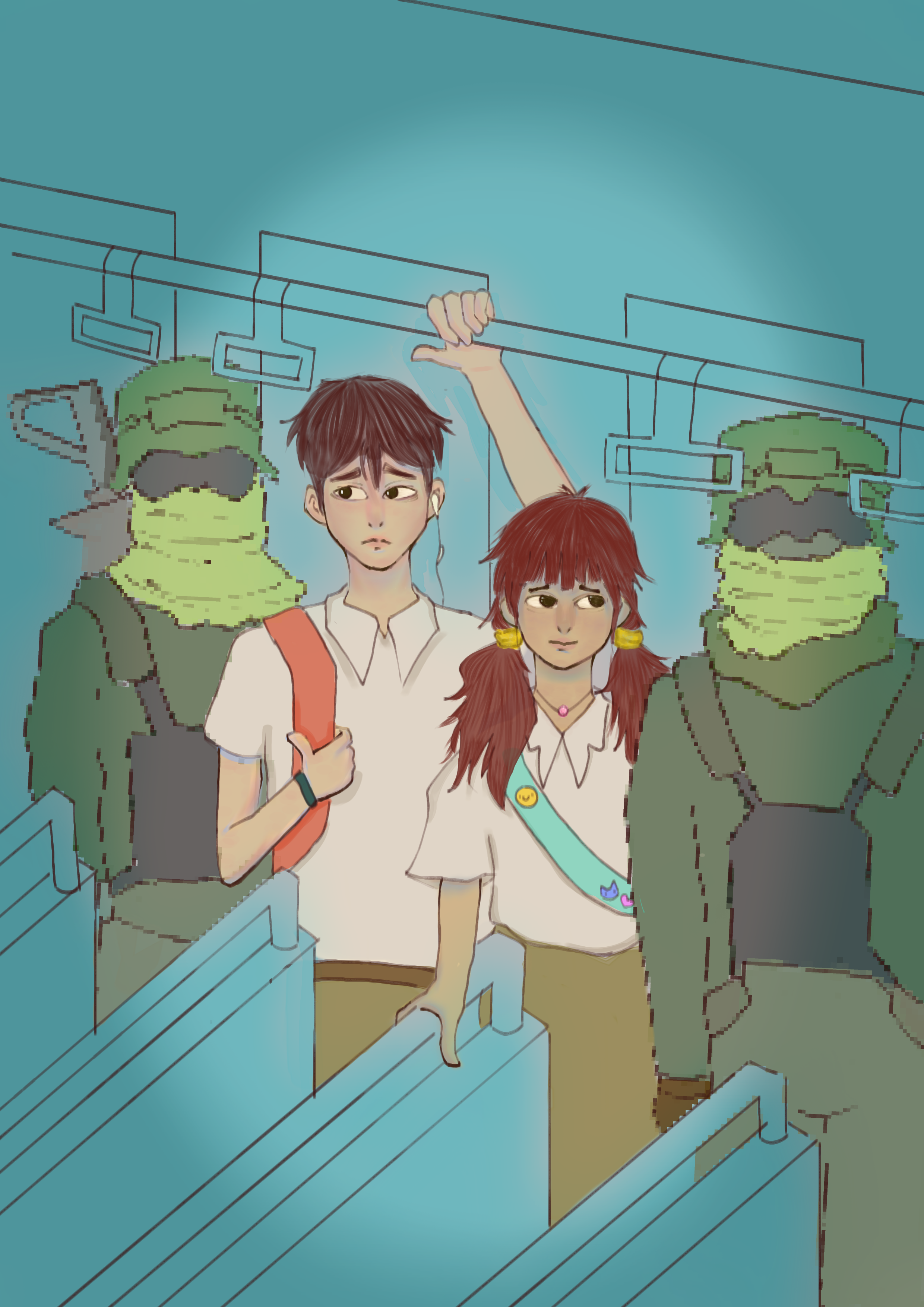
Armed Passengers by Sara Gabriela Ponce Rubio
Description: “My artwork shows how young people feel uncomfortable in public spaces that are ‘controlled’ by the authorities, often in a strict, militarized way. Instead of feeling safe, these spaces make them scared and worried because of the strict rules imposed by the government.”
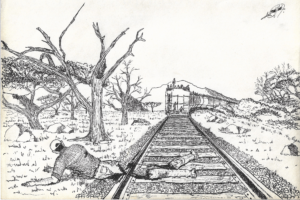
Broken Dreams by Carlos Benjamín Hernández Agustín
Description: “My artwork aims to raise awareness and empathy in the viewer regarding the issue of illegal migration, delving into the reality of Salvadorans who, facing various social problems, seek to improve their lives and that of their families. Unfortunately, in many cases, that dream ends tragically.”
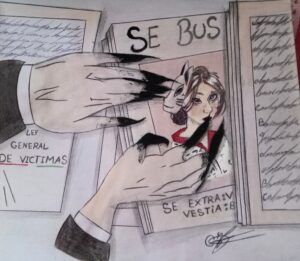
Desperation by Monica Marbely Cruz Lopez
Description: “My artwork represents the disappearance of young people in the world. Often, their kidnappers are people close to them who do not care about the pain their families are going through while trying to find their loved ones. We all have the right to life, to be free, and to walk the streets without fear.”
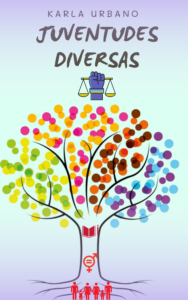
Diverse Youth Impacting Sustainable Development Goals by Karla Steffany Gonzalez Urbano
Description: “Youth are vulnerable because we come from a post-war generation. We lack a voice and representation in various areas of influence and civic participation. Discrimination exists against young people in society; there is no equality. This is especially evident in the education sector, where quality education is lacking, and there are no safe spaces for diverse youth.”
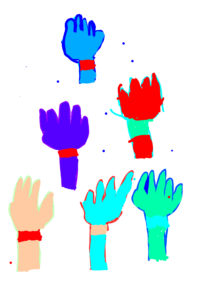
Equality by Zuleyma Pérez
Description: “Nowadays, equality should be embraced so that young people can feel like integral members of society without any distinction based on race, religion, class, and so on. By doing so, we can contribute to instilling values and respecting people’s rights, ultimately paving the way for a better future.”
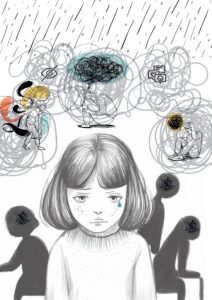
Fractured Youth by Karina Abigail Escobar Mata
Description: “In a society with limited mental health support, young people silently battle anxiety, depression, and stress, trapped by social, academic, and technological pressures. This artwork reflects emotional vulnerability and aims to raise awareness about the importance of mental health in youth.”
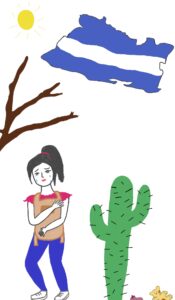
Heading into the Unknown by Zulma Irene Pérez Martínez
Description: “Migrating illegally brings a lot of suffering. Whatever the reason, clandestine migration is not the solution. If a young person is experiencing violence or discrimination, they should seek help from the appropriate institutions rather than exposing themselves to danger in unknown places. Understanding the reality that others are going through can help us be more respectful and support each other as Salvadorans.”
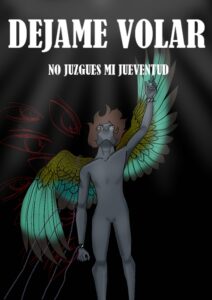
Let Me Fly by Natali Saraí León Lima
Description: “I want people to see that they should take care of young people like us so that our country can become better, giving us the opportunity to grow in peace and without fear of what might happen. I aim to help them understand the rights that young people have so that they can support us more.”
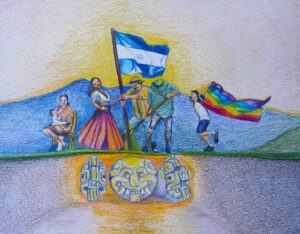
My Country is for Everyone by Fredy Jeremias Araujo Martinez
Description: “The artwork seeks to convey the inclusion of the rights of everyone, regardless of religion, creed, or social status, to show that we all are part of the social fabric of our country’s construction.”
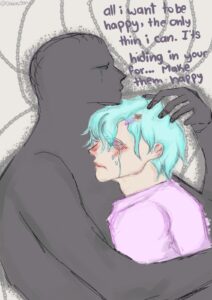
My Heart is Divided into Two Pieces: My Family and I by Camila Del Carmen Menéndez Peña
Description: “My artwork portrays a boy who must navigate between his family’s expectations and his own identity, considering that he is, or wants to be, a girl. For his family, he should be a man, strong and tough. But he wants to be and dress like a girl, enjoying stuffed animals and delicate things, causing his heart to be divided into two pieces.”
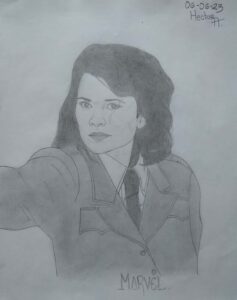
Pegui Cartel by Héctor Antonio Mendoza Garcia
Description: “Gender equality.”
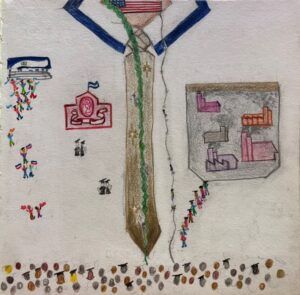
Reality in Perspective by Fátima Esmeralda Fernandez
Description: “Life isn’t all roses. We face the harsh reality every day. Only God is our help so that we can shine abroad with our own light. In a country with limited opportunities but significant alliances, there is great potential if we take the right path and respect the laws. If you don’t have influence in El Salvador, be prepared to be a ray of hope in the face of great adversity.”
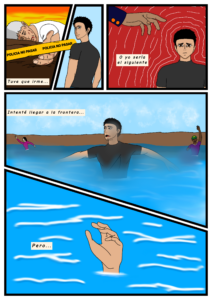
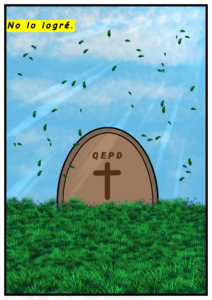
See You Soon by Claudia Liliana López Marroquín
Description: “The comic strip reflects the migration of young people due to the violence generated by contexts of insecurity and the need to leave the country to avoid becoming victims of aggression. My artwork aims to shed light on the risks that young people face when leaving their place of origin, where the state should ensure optimal conditions to prevent this from happening.”
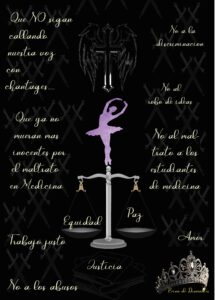
Soul in Freedom by Virna Maria Patiño Rivera
Description: “My artwork illustrates how rights are violated and how education, along with unity in the fight to break the chains that bind us, can provide us with freedom.”
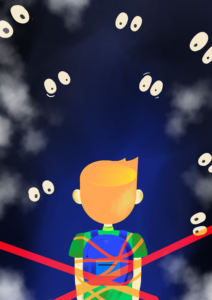
The Curtain of the Road by Jamie Marisol Martínez Larios
Description: “Simply by being young, you are watched and judged. Every step you take is scrutinized by others, from the moment you leave your home. Young people are labeled based on how they dress, speak, and who they associate with at any given moment. They always ask where you’re from. The red lines represent the fear and apprehension in the heart of the youth.”
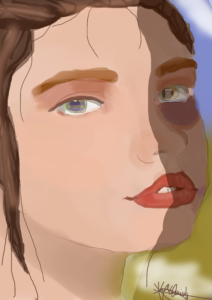
The Migrant Woman by Katherine Julissa Valencia Martínez
Description: “Migration is an issue that affects Salvadorans of all ages. However, being a vulnerable population, women face many forms of violence, adding more threats when it comes to migrating. Being young with limited opportunities in their country, and with migration as an alternative, many end up losing their lives.”
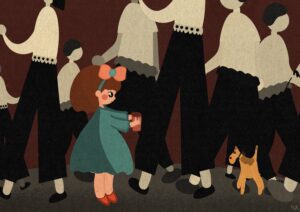
Theater by Bárbara Mercedes Rais Ortega
Description: “The word ‘theater’ comes from the Latin ‘Theatrum,’ which means ‘the place where you watch.’ We can either be spectators of injustices or change our surroundings in this theater called life. Children and youth deserve food, a home, education, and love. It’s the responsibility of adults, the system, and their parents to provide these. I want this artwork to ignite the spark of doing something for someone else.”
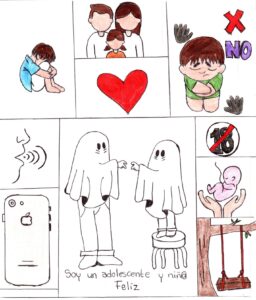
Those Who Are Not Heard: What Children and Adolescents Keep Silent by Kimberly Valeria Contreras
Description: “Nowadays, there are many suicides and a lot of chaos in the lives of children and young people simply because they are not heard. I, a young adult, want to represent what I have gone through and experienced due to not being heard so that someone else can relate to my artwork.”
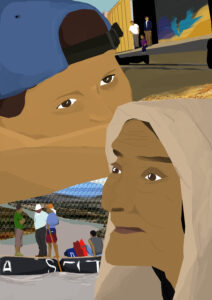
We are Not Guilty by Gloria Maricela Castaneda Carranza
Description: “When a violent incident occurs, the aim is to avoid experiencing it again. This is why migration becomes the most suitable solution for many young people. However, the journey for individuals is challenging. Behind them, there are parents and grandparents who go through a nightmare, thinking about the vulnerable conditions that could prevent their child from reaching their desired goal or returning to the place where they grew up.”
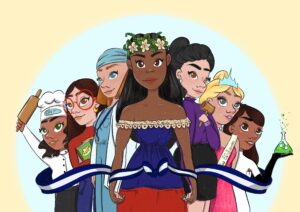
We Can Be Whatever We Want to Be by Valeria Eugenia Zelaya Morales
Description: “In El Salvador, gender inequality remains a significant social issue, with women still facing discrimination in various aspects of life.”


